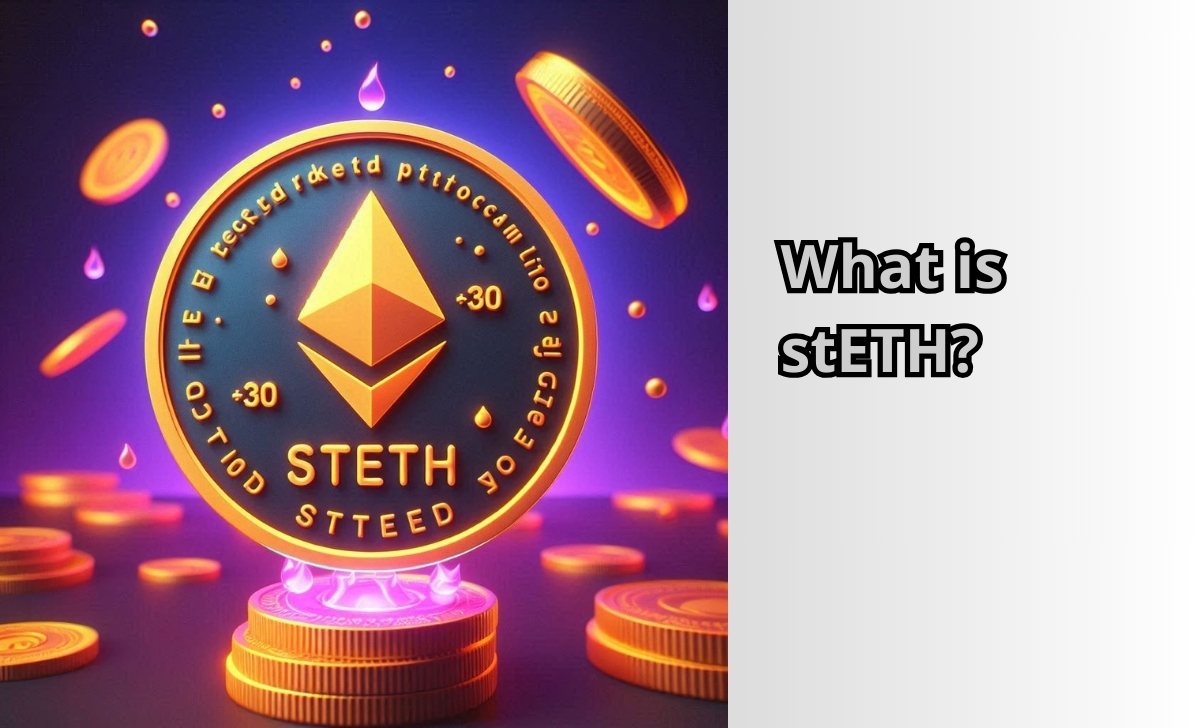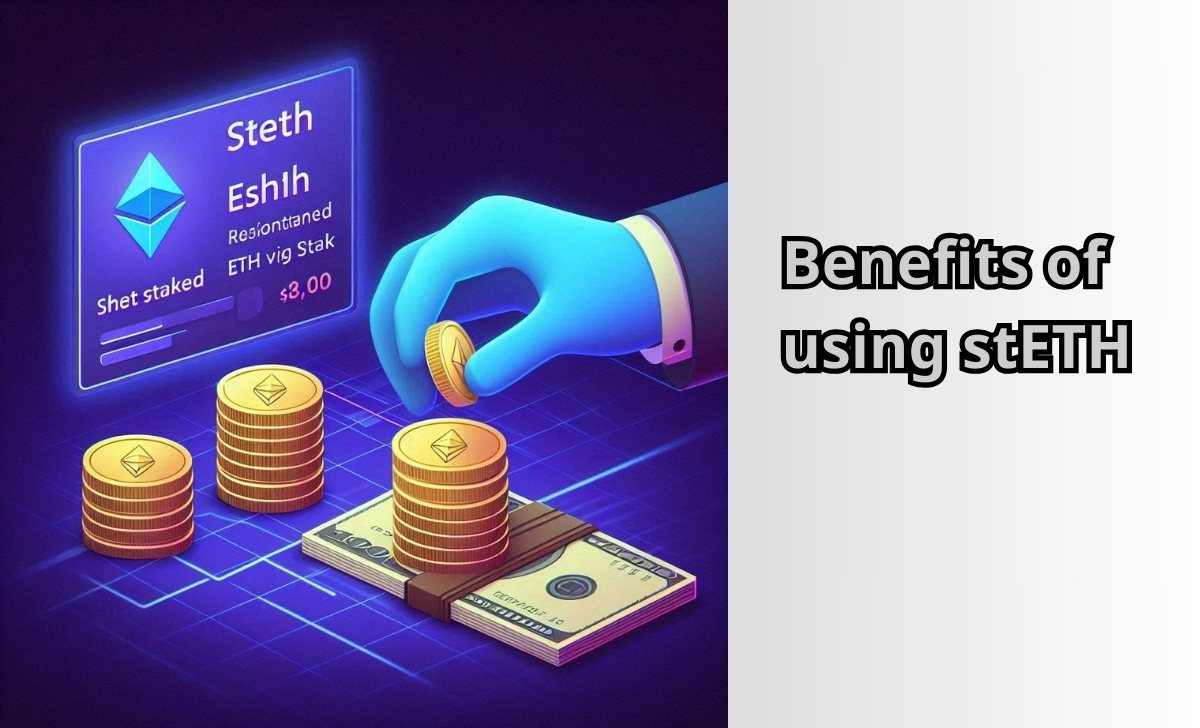stETH is a token representing ETH that has been staked through the Lido protocol, enabling users to participate in staking while retaining liquidity for their assets. With stETH, you can earn staking rewards and still use the asset in other DeFi applications.
In this article, AZCoin will help you explore stETH in detail, how it works, its benefits and potential risks.
What is stETH?

stETH is a token that represents the amount of ETH a user has staked through Lido, a decentralized staking protocol. When you stake ETH via Lido, you receive stETH, which is equivalent to the amount of ETH staked plus the staking rewards. stETH not only represents your staking value but can also be used in DeFi applications to generate additional returns.
How does stETH work?
When you deposit ETH into Lido for staking, Lido locks your ETH on the Beacon Chain, a part of Ethereum 2.0 and issues you an equivalent amount of stETH. The amount of stETH you receive is based on the amount of ETH you have staked and the rewards you will earn from the staking process.
stETH can be transferred, traded, or used in other DeFi protocols without waiting for the staking process to complete. This provides users with flexibility, allowing them to engage in staking and DeFi activities simultaneously.
Additionally, some platforms like StakeStone also allow users to combine stETH to maximize returns and leverage other investment opportunities.
Benefits of using stETH

Here are some benefits of using stETH:
- High Liquidity: One of the major benefits of stETH is the ability to maintain liquidity for your assets. Typically, when you stake ETH directly on Ethereum 2.0, your assets are locked until the staking process completes, which can take months or even years. With stETH, you can use your assets immediately without waiting.
- Stability and Security: stETH is developed by Lido, a reputable decentralized staking protocol. This ensures high security for stETH and users can be confident in the value of their assets during the staking process.
- Double Yield Potential: stETH allows you to earn double returns from both ETH staking and using stETH in other DeFi protocols. You can deposit stETH into platforms like Aave, Curve, or Yearn Finance to earn additional yields while still receiving staking rewards from Lido.
Risks and limitations of stETH
Despite its benefits, stETH also faces certain risks:
- Staking Risks: While stETH offers many advantages, there are inherent risks, especially related to staking. If issues arise with Ethereum 2.0 or the Beacon Chain, the value of stETH could be affected.
- Withdrawal Limitations: One limitation of stETH is that you cannot withdraw your ETH until Ethereum 2.0 is fully implemented and the transition is complete. This means that while you can trade stETH, your original ETH remains locked in the Beacon Chain.
- Smart Contract Risks: stETH is a smart contract-based asset, meaning that if there are any vulnerabilities or bugs in Lido’s smart contract, the value of stETH could be at risk.
Practical applications of stETH in DeFi

stETH is not only a token representing staked ETH but also a powerful tool in the DeFi ecosystem. Here are some practical uses of stETH in the DeFi space:
Depositing stETH into Aave for additional borrowing
stETH can be used as collateral on decentralized lending platforms like Aave. By depositing stETH into Aave, users can borrow other cryptocurrencies without selling their stETH. This allows users to capitalize on Ethereum Staking profits while using the borrowed assets for other investment opportunities in DeFi.
Trading stETH on Decentralized Exchanges (DEXs)
stETH can be traded on decentralized exchanges (DEXs) like Curve Finance. Curve provides liquidity pools for stETH, enabling users to easily swap stETH with other tokens. This not only provides liquidity for stETH but also creates opportunities to earn from price differences between tokens in the pool.
Participating in Yearn Finance for optimal yields
Yearn Finance, a leading DeFi platform, allows users to deposit stETH into vaults to earn optimal returns. Yearn Finance automatically manages and adjusts investment strategies to maximize yields for depositors. This helps users not only receive staking rewards from ETH but also benefit from other DeFi strategies.
Providing Liquidity on DeFi Protocols
Users can use stETH to provide liquidity on other DeFi protocols, such as SushiSwap or Balancer. By providing liquidity, users earn rewards from transaction fees and other incentives from the protocol. This is a way to maximize returns from holding stETH.
Using stETH in leveraged strategies
Some DeFi protocols allow users to use stETH in leveraged strategies, where users can borrow additional assets based on the value of stETH and invest in high-yield opportunities. This creates potential for greater returns but also comes with higher risks.
Participating in staking programs
Some DeFi platforms offer combined staking programs, allowing users to stake stETH to earn additional rewards or project tokens. This leverages both ETH staking benefits and participation in the DeFi ecosystem.
If you are an investor looking for a reputable trading platform, check out the list of the best crypto exchanges 2024 here.
The future of stETH in DeFi

stETH is gradually becoming one of the most popular assets in the DeFi space due to its high liquidity and yield potential. As more DeFi protocols adopt stETH, its use cases will expand, helping users optimize their investment strategies.
However, the future of stETH also depends on the development of Ethereum 2.0 and the stability of the Beacon Chain. If Ethereum 2.0 is completed and operates smoothly, stETH will continue to play a significant role in the DeFi ecosystem.
The future of stETH and Ethereum 2.0
Ethereum 2.0 represents a major advancement in improving Ethereum’s scalability and security. stETH will continue to be an important tool for users engaging in staking, even after Ethereum 2.0 is fully implemented.
As the transition to Ethereum 2.0 concludes, stETH may become increasingly significant, particularly as it allows users to participate in the Ethereum ecosystem without sacrificing liquidity.
Conclusion
In conclusion, stETH is a versatile financial tool offering numerous benefits to users. AZcoin believes that holding stETH not only helps you participate in securing the Ethereum network but also opens up many exciting investment opportunities!

I am Louis Dang, living in Ottawa, Canada. I am currently working as a trader for AZCoin company, with 7 years of experience in the cryptocurrency market, I hope to bring you useful information and knowledge about virtual currency investment.











